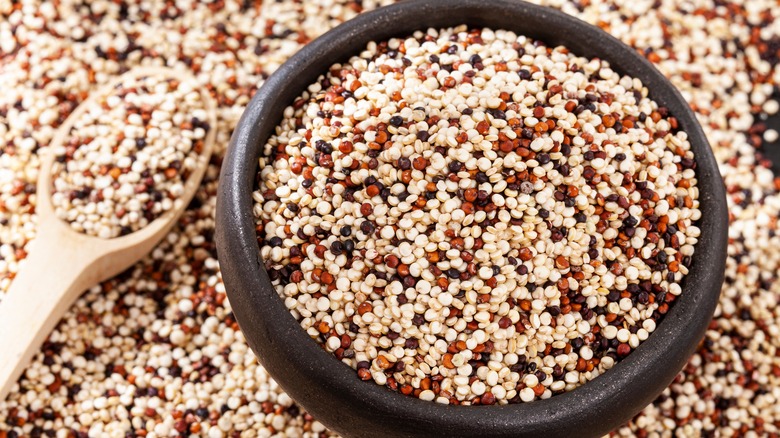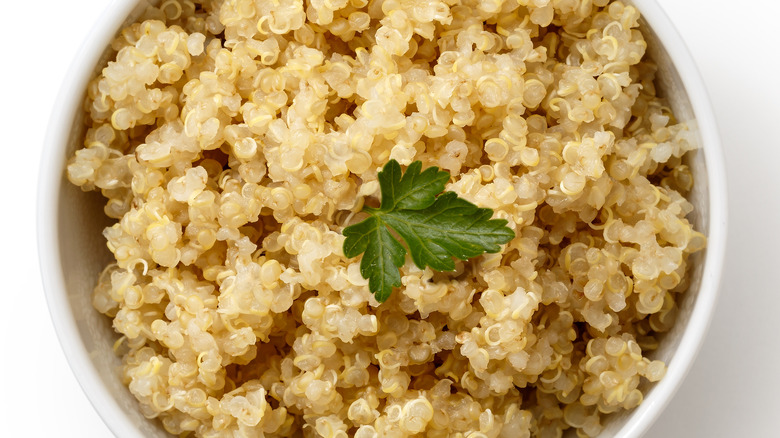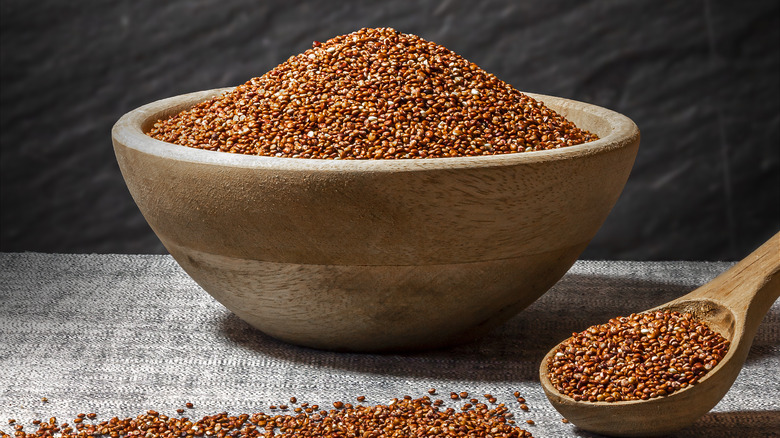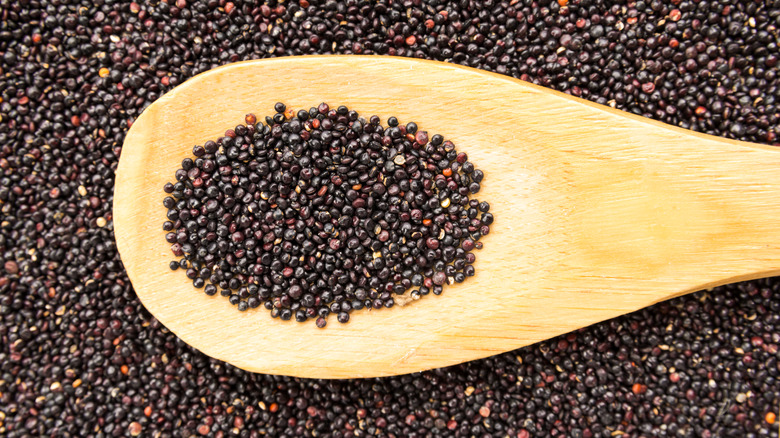The 3 Colors Of Quinoa, Explained
Both a trendy and healthy food, quinoa acts as a versatile ingredient in all kinds of dishes. It has the bandwidth to star in everything, from sweet treats to savory lunches. You can use quinoa to make homemade energy bars, or opt for a do-it-yourself grain bowl that rivals those at your go-to salad chain. Quinoa is so flexible that it can even complement the likes of chocolate chip, cherry, and pecan cookies. Stock up on quinoa, and you can easily round off a flavorful meal with a sweet finish.
However, cooking with quinoa can be confusing, considering there are more than 120 known varieties up for grabs, according to the Harvard School of Public Health (HSPH). To distinguish between these iterations, color comes into play; you'll find it most frequently in white, red, and black. Though other shades exist, these three colors remain the most common varieties of the delicious seed, notes Real Simple. You can eat each quinoa variation separately or combine them to create a colorful and ultra-tasty dish. Yet while each type surely falls under the umbrella of quinoa's potential, the varieties are not quite the same. Each color contributes its own flavor and texture, which range from the mild and soft to the nutty and crunchy.
White quinoa boasts versatility and neutrality, due to its mild flavor and soft texture
Among the many, many quinoa iterations, white quinoa has a notably neutral and mild flavor, as well as a notably versatile function (via HSPH). It's, therefore, not surprising that white quinoa is popular. It's one of the better, if not best, options if you're new to eating and cooking with the superfood. When in doubt, it's a safe bet to start mild and work your way up from there.
White quinoa's versatility stems from both its flavor and texture. According to Everyday Health, white quinoa becomes fluffy and light after cooking, making it useful in lieu of rice. Similar to rice, white quinoa — as well as quinoa at large — also benefits from a proper rinse ahead of usage. Yet while white quinoa can replace rice, it functions not as a substitute but as a star. Because white quinoa is relatively neutral, it's the perfect variation for experimenting with quinoa-based recipes. If you have it on hand, breakfast bowls, pizza crusts, and coconut curries are all great options in which to use it (via Simply Quinoa).
Red is a common quinoa color with a nutty, savory taste
Compared to the mild taste and consistency of the white variety, red quinoa packs a lot of color — and just as much flavor. Bob's Red Mill defines red quinoa as nutty with a crunchy texture. As for how it specifically compares to white quinoa, red quinoa has a more distinctive flavor profile. It also has a chewier texture when cooked (via Healthline). You can certainly choose red quinoa for its flavor and consistency, though Healthline also recommends the vibrant grain for adding a pop of color to your dishes. Salads never looked so enticing, not to mention bright.
Red quinoa looks better in certain dishes than it does others. Per Simply Quinoa, it particularly shines in savory foods like salads and grain bowls that benefit from a little extra crunch. It's also flavorful on its own or as an addition to soups, hot cereals, pilafs, and the like. For sweeter fare and baked goods, however, the taste of red quinoa may prove too earthy and robust. That's when white quinoa's more neutral flavor may be best.
Black quinoa trails in popularity, but exceeds in oomph and sweetness
Less common than both white and red quinoa, black quinoa still has its place in the canon. Black quinoa is actually more similar to red than it is white; it retains that delicious and textured crunch, as well as that earthy and nutty taste. As such, it works great, yet again, in an array of dishes; Woodland Foods highlights salad, chili, porridge, and even quinoa chips as potential vessels for the black seed. For these recipes, black quinoa can be used on its own. In the case of a zesty southwest salad, you can mix black with red for an amalgamation of flavors.
Just because black quinoa can easily complement other color varieties, that doesn't mean it's interchangeable. According to America's Test Kitchen, black quinoa seeds are smaller than the others. Of the three, black keeps its shape well during cooking and remains particularly crunchy. However, black quinoa is ultimately best incorporated into recipes that specifically account for its slightly sandy texture and sweet flavor profile. Regardless of whether you choose black, red, or white, quinoa is undeniably as adaptable as it is colorful. After all, it's an ingredient that works equally well in salads as it does chips and the occasional cookie.



